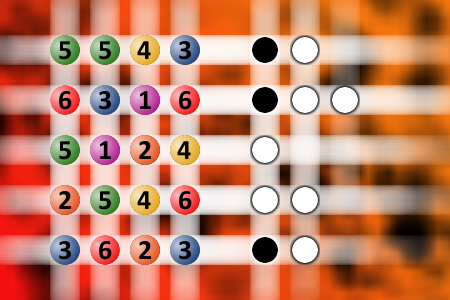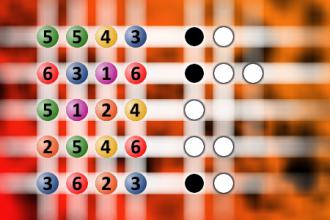Which is a winning combination of digits?
The computer chose a secret code (sequence of 4 digits from 1 to 6). Your goal is to find that code. Black circles indicate the number of hits on the right spot. White circles indicate the number of hits on the wrong spot.
Facts of life...
A man walks into a drug store with his 8-year old son. They happen to walk by the condom display, and the boy asks, "What are these, Dad?" To which the man matter-of-factly replies, "Those are called condoms, son.... Men use them to have safe sex."
"Oh I see," replied the boys pensively. "Yes, I've heard of that in health class at school." He looks over the display and picks up a package of 3 and asks, "Why are there 3 in this package."
The dad replies, "Those are for high school boys. One for Friday, one for Saturday, and one for Sunday."
"Cool!" says the boy. He notices a 6 pack and asks, "Then who are these for?" "Those are for college men." the dad answers, "TWO for Friday, TWO for Saturday, and TWO for Sunday."
"WOW!" exclaimed the boy, "then who uses THESE?" he asks, picking up a 12 pack. With a sigh, the dad replied, "Those are for married men. One for January, one for February, one for March........"

